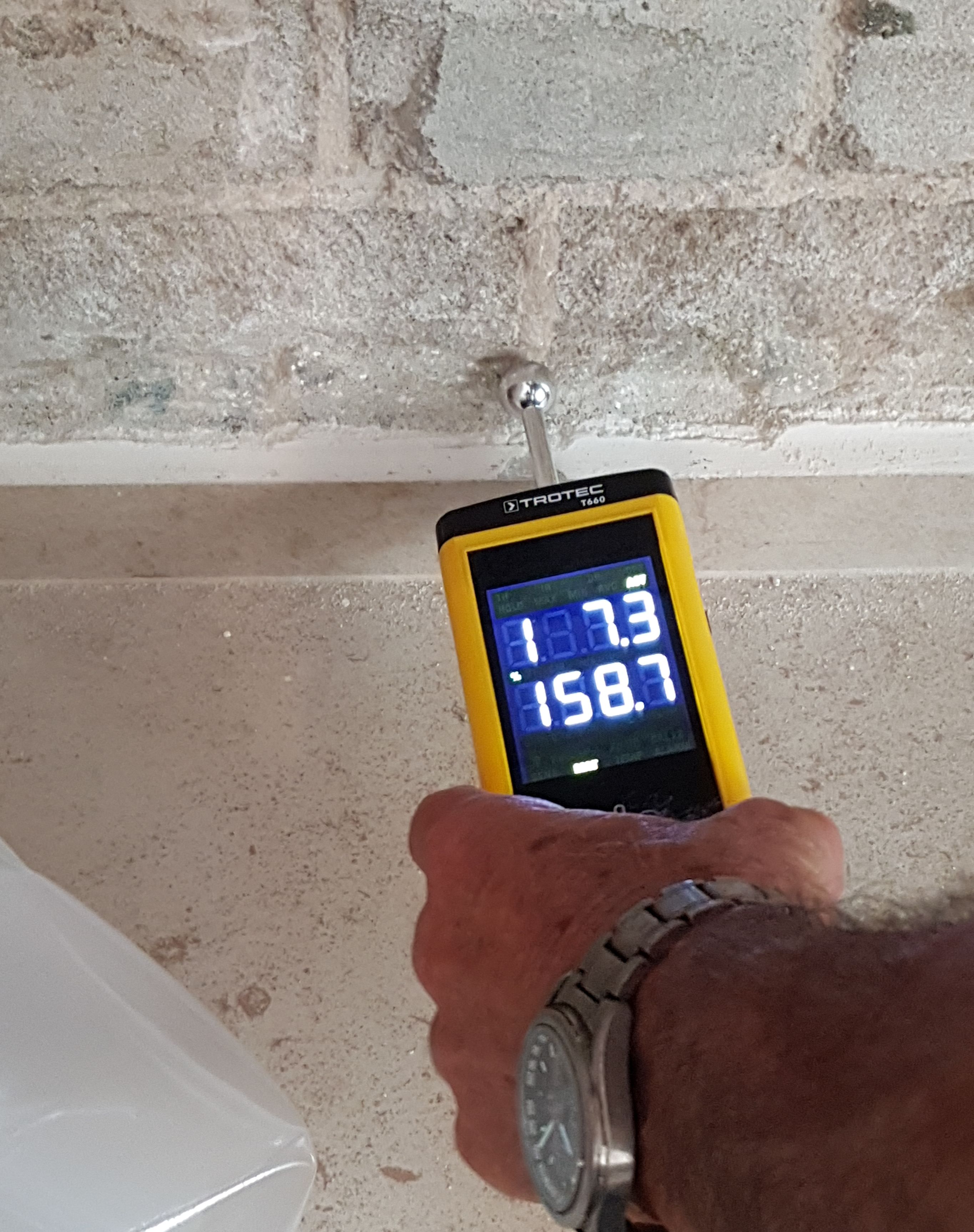Exactly how to Utilize a Moisture Meter to Discover Concealed Water Damage in Your Property
Exactly how to Utilize a Moisture Meter to Discover Concealed Water Damage in Your Property
Blog Article
Look Into the World of Moisture Meters: Everything You Required to Know
In the realm of moisture meters exists a globe of precision and usefulness that often goes undetected. These tools, while relatively straightforward, hold a wide range of information that can significantly impact different industries and applications. Comprehending how moisture meters operate, the various types available, and their varied uses can drop light on their value in guaranteeing top quality and efficiency. By exploring the complexities of wetness meters, one can discover a valuable device that transcends mere measurement, supplying insights that can make a considerable difference in countless areas.
How Moisture Meters Work
Moisture meters run by measuring the electric conductivity or capacitance of products to identify the dampness material present. These meters are indispensable devices throughout numerous markets, including woodworking, agriculture, and building. By utilizing different techniques such as pin-type or pinless innovation, wetness meters offer exact readings that assist experts make educated decisions.
Pin-type dampness meters function by inserting the sharp pins into the material being examined. On the other hand, pinless wetness meters use electromagnetic signals to scan a larger area without causing any damages to the product's surface area.
Despite the approach used, wetness meters play a critical duty in avoiding concerns such as mold growth, architectural damage, or product defects brought on by excess wetness. Comprehending exactly how these meters work is essential for ensuring the top quality and integrity of materials in various applications.
Sorts Of Moisture Meters
Provided the crucial role dampness meters play in various industries, it is necessary to recognize the different kinds readily available to specialists for properly assessing wetness degrees - Moisture Meter. There are mostly two major kinds of dampness meters: pinless and pin-type dampness meters

On the other hand, pinless wetness meters use electromagnetic sensor plates to scan a larger area of the product without causing any damages. This kind appropriates for quickly scanning large areas and is generally used for flooring, walls, and ceilings. Pinless meters are practical for taking analyses on completed surfaces without leaving any visible marks.
Both sorts of dampness meters have their advantages and are selected based on the details demands of the work handy. Recognizing the distinctions between these types is important for specialists to make precise moisture evaluations.
Applications Throughout Industries
With diverse performances, moisture meters find widespread application throughout numerous industries, assisting experts in guaranteeing ideal conditions for products and structures. In the agriculture sector, moisture meters are indispensable for determining the dampness content in grains, seeds, and hay, making sure high quality control and stopping mold growth. Building and construction experts count on wetness meters to assess the moisture degrees in structure products like drywall, concrete, and timber, which is important for maintaining architectural stability and stopping concerns like rot or mold. The flooring industry utilizes wetness meters to determine the dampness material in subfloors before mounting different flooring, preventing expensive damages due to excess dampness. Additionally, in the food sector, wetness meters are utilized to keep an eye on and manage moisture levels in items such as go to my site grains, nuts, and dried fruits to keep quality and top quality. In addition, wetness meters play a crucial function in the remediation and damage control industry by aiding specialists address and identify water damages in structures promptly. Throughout these varied markets, dampness meters are essential tools for ensuring the top quality, safety and security, and durability of various products and items.
Tips for Utilizing Dampness Meters
When gauging the dampness material in numerous products,Make use of the moisture meter's calibration settings to make sure precise readings. Calibration is critical for the proper functioning of a moisture meter. Before each usage, it is advisable to examine and readjust the calibration settings according to the certain product being evaluated. Additionally, make certain the meter is set to the correct moisture array for the material you are measuring to obtain one of the most precise results.
When making use of a pin-type wetness meter, place the pins to the proper deepness suggested for the product being tested. This guarantees that the wetness analyses are drawn from the correct depth within the material, giving a more exact representation of its dampness material. For pinless moisture meters, bear in mind to preserve proper call with the material's surface area to obtain trusted readings.
On a regular basis examine and replace the batteries in your moisture meter to stop unreliable readings because of reduced power. When not in use to prolong its life-span and preserve its accuracy, Shop the meter in a risk-free and completely dry area. By complying with these ideas, you can optimize the performance of your wetness meter and acquire this hyperlink exact dampness web content dimensions throughout various products.
Upkeep and Calibration
To guarantee the precision of moisture material measurements, regular maintenance and calibration of the dampness meter are essential steps in its proper performance. Calibration changes the moisture meter to make sure that it offers regular and trusted results.
Calibration ought to be executed periodically, particularly if the dampness meter is made use of frequently or in vital applications where precise dimensions are needed. By adjusting the dampness and maintaining my response meter regularly, individuals can rely on the accuracy of the dampness content measurements acquired.
Final Thought

Finally, moisture meters play a critical duty in various industries by precisely gauging the wetness content of materials. Recognizing exactly how these tools work, the various kinds available, and proper upkeep and calibration are crucial for obtaining dependable outcomes. Whether in manufacturing, building and construction, or agriculture, making use of dampness meters assists guarantee quality assurance and performance in processes.

In final thought, dampness meters play a vital role in numerous markets by properly measuring the wetness material of materials.
Report this page